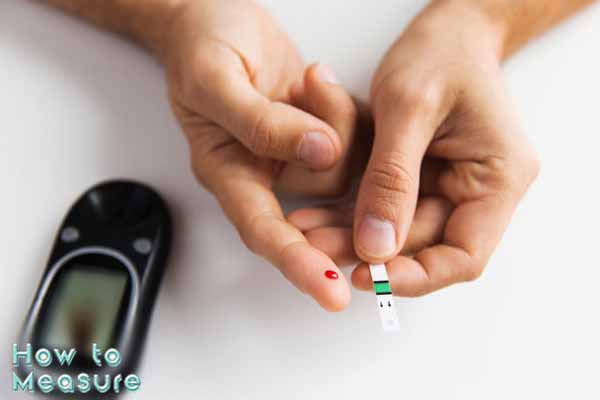Why is 75 Gram Glucose Measured?

You can measure the body’s ability to use a type of sugar called Glucose, the body’s main energy source, with the oral glucose tolerance test (OGTT). This test can be used to diagnose prediabetes and diabetes. An OGTT is most commonly done to screen for diabetes that occurs with pregnancy (gestational diabetes).
How to prepare
To prepare for the diagnostic glucose tolerance test:
Eat a balanced diet containing at least 150 grams (g) of carbohydrates per day for 3 days before the test. Fruits, bread, cereals, grains, rice, crackers, and starchy vegetables like potatoes, beans, and corn are good sources of carbohydrates.
Do not eat, drink, smoke, or exercise vigorously for at least 8 hours before your first blood sample is drawn.
Your doctor should know about all prescription and nonprescription medications you are taking. You may be instructed to stop taking certain medications before the test.
The OGTT test may take up to 4 hours. Because activity can interfere with the test results, you will be asked to sit still for the entire test. Do not eat during the test. You can only drink water during this time.
On the day of the test, the following steps will be followed:
- A blood sample will be drawn when you arrive. This is your fasting blood glucose value. Provides a baseline value to compare to other glucose values.
- You will be asked to drink a sweet liquid that contains a measured amount of Glucose. It is better to drink the liquid quickly. You will drink 75 or 100 grams for the standard glucose tolerance test.
- Blood samples will be drawn at 1, 2, and sometimes 3 hours after you drink the Glucose. Blood samples may also be taken within 30 minutes or more than 3 hours after drinking the Glucose.
How is the Test Done?
- An elastic band will be attached to your upper arm to stop blood flow. This causes the veins below the band to enlarge, making it easier to put a needle into the vein.
- They will clean the needle insertion site with alcohol.
- They will put the needle into the vein. It may be necessary to prick more than once with the needle.
- They will attach a tube to the needle to fill it with blood.
- The band will be removed from your arm when enough blood has been drawn.
- When they withdraw, they will place a gauze pad or cotton ball over the needle insertion site.
- They will press on the insertion site and then put a bandage on it.
You may find it difficult to drink the extremely sweet liquid with Glucose. Some people feel sick after drinking the liquid because of the high glucose amount and may vomit. If you vomit, you may not be able to complete the test that day.
A needle takes the blood sample from a vein in the arm. An elastic band is attached to the upper arm. It may feel tight. You may not feel the needle at all, or you may feel a quick prick or pinch.
You may feel like you will pass out from the blood samples taken in a day. However, the amount of blood drawn will not cause significant blood loss or anemia.
Test Results
The oral glucose tolerance test (OGTT) measures the body’s ability to use a type of sugar called Glucose, the body’s main energy source.
Normal
Each laboratory has different limits for what is normal. Your lab test report should include the limits your lab uses for each test. The normal limits are only a guide. Your doctor will also consider your age, health, and other factors while evaluating the results. A value not within normal limits could still be normal for you.
High Values
High glucose values can be caused by:
- Diabetes
- Gestational diabetes
- Hyperthyroidism
- Some medications, such as corticosteroids, niacin, phenytoin (Dilantin), some diuretics, and some medications used to treat high blood pressure, HIV, or AIDS
- Large amounts of the hormone cortisol in the blood
- Hereditary diseases, such as hemochromatosis
- Pheochromocytoma
Low Values
Low glucose levels can be caused by:
- Certain medicines, such as those used to treat diabetes, some blood pressure medicines (such as propranolol), and some medicines for depression (such as isocarboxazid).
- A decreased production of the hormones cortisol and aldosterone
- Problems with the thyroid gland or an underactive pituitary gland
- A tumor or other problems of the pancreas
- Liver disease
Many conditions can change blood glucose levels. Your doctor will discuss any significant abnormal results related to your symptoms and past health.
How to measure 75 grams of Glucose at home?
Measuring 75 grams of Glucose at home is a simple task if you have a kitchen scale or a measuring spoon that can accurately weigh the required amount. Glucose, a type of sugar, is commonly used in cooking, baking and as an ingredient in various recipes and beverages.
Here’s how you can measure 75 grams of Glucose at home:
Using a Kitchen Scale:
-
Gather Your Ingredients: Make sure you have the glucose powder or crystals.
-
Place the Scale on a Flat Surface: Set up your kitchen scale on a stable, level surface.
-
Turn On the Scale: Most digital kitchen scales will have a power button or automatically turn on when you place an item on the weighing platform.
-
Place a Container on the Scale: Get a clean and dry container or a small bowl to hold the Glucose.
-
Tare the Scale: Press the “Tare” or “Zero” button on the Scale to reset it. This ensures that the weight of the container is not included in the final measurement.
-
Add Glucose to the Container: Carefully pour the Glucose into the container on the Scale until the weight reaches 75 grams.
-
Check the Measurement: Once you reach 75 grams, you have successfully measured the desired amount of Glucose.
-
Use the Glucose as Needed: Transfer the measured Glucose to your recipe or storage container, depending on your intended use.
Using Measuring Spoons (if applicable):
Some measuring spoon sets include a tablespoon or teaspoon for dry ingredients, and they may also have measurements in grams. If your set has a tablespoon that corresponds to 75 grams of Glucose, you can use it as follows:
-
Ensure the Accuracy: Double-check that the measuring spoon you intend to use specifies a 75-gram measurement.
-
Scoop Glucose into the Measuring Spoon: Gently scoop the Glucose into the measuring spoon until it reaches the top, without packing it too tightly.
-
Level Off the Excess: Using a flat edge, such as a knife or spatula, level off the excess Glucose from the measuring spoon to achieve an accurate measurement.
-
Transfer to Your Recipe or Container: Once you have measured 75 grams, transfer the Glucose to your recipe or storage container.
Important Note: If you don’t have a kitchen scale or measuring spoon with a specific 75-gram measurement, investing in a reliable kitchen scale is recommended. Scales are versatile tools that can accurately measure various ingredients and are beneficial in precise cooking and baking.
Always follow any specific instructions in your recipe for measuring Glucose or other ingredients to ensure the best results in your culinary endeavors.
How to Measure 75 Gram Glucose
A pack of Glucose weighs 100 grams, so they usually take ¾ of the pack. But it can also be measured by a teaspoon, a tablespoon, or a cup. Seventy-five grams of Glucose equals 1/3 of a cup, 5.22 tablespoons, or 15.65 teaspoons.
In this article on how to measure, you read about why 75 grams of Glucose is measured.











